1. Nataro JP, Kaper JB. Diarrheagenic
Escherichia coli
. Clin Microbiol Rev. 1998; 11(1):142–201. PMID:
9457432.
2. Majowicz SE, Scallan E, Jones-Bitton A, Sargeant JM, Stapleton J, Angulo FJ, et al. Global incidence of human Shiga toxin-producing Escherichia coli infections and deaths: a systematic review and knowledge synthesis. Foodborne Pathog Dis. 2014; 11(6):447–455. PMID:
24750096.
3. Pires SM, Majowicz S, Gill A, Devleesschauwer B. Global and regional source attribution of Shiga toxin-producing Escherichia coli infections using analysis of outbreak surveillance data. Epidemiol Infect. 2019; 147:e236. PMID:
31364563.
4. Centers for Disease Control and Prevention(CDC). National Shiga toxin-producing Escherichia coli (STEC) Surveillance Annual Report, 2017. Atlanta, GA, USA: US Department of Health and Human Services, CDC;2021.
5. European Centre for Disease Prevention and Control (ECDC). Control. Shiga-toxin/verocytotoxin-producing Escherichia coli (STEC/VTEC) infection. Stockholm, Sweden: ECDC;2020.
6. National Institute of Infectious Diseases. Enterohemorrhagic Escherichia coli (EHEC) infection as of March 2020 in Japan. IASR. 2020; 41(5):65–66.
7. World Health Organization. Shiga Toxin-producing Escherichia Coli (STEC) and Food: Attribution, Characterization and Monitoring. Geneva, Switzerland: World Health Organization;2019.
8. Rosales A, Hofer J, Zimmerhackl LB, Jungraithmayr TC, Riedl M, Giner T, et al. Need for long-term follow-up in enterohemorrhagic Escherichia coli-associated hemolytic uremic syndrome due to late-emerging sequelae. Clin Infect Dis. 2012; 54(10):1413–1421. PMID:
22412065.
9. Boyce TG, Swerdlow DL, Griffin PM.
Escherichia coli O157:H7 and the hemolytic-uremic syndrome. N Engl J Med. 1995; 333(6):364–368. PMID:
7609755.
10. Lee SW, Lee BK, Lee YJ, Lee HS, Jung SC, Sun KH, et al. A study on epidemiological characteristics and control methods of EHEC infection in Korea. Korean J Epidemiol. 2005; 27(1):37–52.
11. Korea Centers for Disease Control and Prevention (KCDA). Epidemiological Investigation of Infectious Diseases in Republic of Korea Annual Report 2011. Osong, Korea: Korea Centers for Disease Control and Prevention;2012.
12. Lee SH, Yun JW, Lee JH, Jung YH, Lee DH. Trends in recent waterborne and foodborne disease outbreaks in South Korea, 2015–2019. Osong Public Health Res Perspect. 2021; 12(2):73–79. PMID:
33979997.
13. Kim SW. COVID-19 outbreak in Daegu City, Korea and response to COVID-19: how have we dealt and what are the lessons? J Korean Med Sci. 2022; 37(50):e356. PMID:
36573388.
14. Shin M, Kim JE, Lee HY, Lee SY, Lee SE, Park YJ, et al. Management of contacts of the first imported monkeypox case in Korea. J Korean Med Sci. 2022; 37(37):e285. PMID:
36163479.
15. Korea Centers for Disease Control and Prevention (KCDA). Infectious Diseases Surveillance Yearbook, 2021. Osong, Korea: Korea Disease Control and Prevention Agency;2022.
16. Werber D, Mason BW, Evans MR, Salmon RL. Preventing household transmission of Shiga toxin-producing
Escherichia coli O157 infection: promptly separating siblings might be the key. Clin Infect Dis. 2008; 46(8):1189–1196. PMID:
18444854.
17. Brandal LT, Wester AL, Lange H, Løbersli I, Lindstedt BA, Vold L, et al. Shiga toxin-producing escherichia coli infections in Norway, 1992–2012: characterization of isolates and identification of risk factors for haemolytic uremic syndrome. BMC Infect Dis. 2015; 15(1):324. PMID:
26259588.
18. Butt S, Jenkins C, Godbole G, Byrne L. The epidemiology of Shiga toxin-producing
Escherichia coli serogroup O157 in England, 2009–2019. Epidemiol Infect. 2022; 150:e52. PMID:
35241189.
19. Tack DM, Kisselburgh HM, Richardson LC, Geissler A, Griffin PM, Payne DC, et al. Shiga toxin-producing Escherichia coli outbreaks in the United States, 2010–2017. Microorganisms. 2021; 9(7):1529. PMID:
34361964.
20. MacDonald E, Dalane PK, Aavitsland P, Brandal LT, Wester AL, Vold L. Implications of screening and childcare exclusion policies for children with Shiga-toxin producing
Escherichia coli infections: lessons learned from an outbreak in a daycare centre, Norway, 2012. BMC Infect Dis. 2014; 14(1):673. PMID:
25518922.
21. Liu B, Furevi A, Perepelov AV, Guo X, Cao H, Wang Q, et al. Structure and genetics of
Escherichia coli O antigens. FEMS Microbiol Rev. 2020; 44(6):655–683. PMID:
31778182.
22. European Food Safety Authority. European Centre for Disease Prevention and Control. The European Union one health 2020 zoonoses report. EFSA J. 2021; 19(12):e06971. PMID:
36329690.
23. World Health Organization. Foodborne Disease Outbreaks: Guidelines for Investigation and Control. Geneva, Switzerland: World Health Organization;2008.
24. Marshall KE, Hexemer A, Seelman SL, Fatica MK, Blessington T, Hajmeer M, et al. Lessons learned from a decade of investigations of Shiga toxin–producing Escherichia coli outbreaks linked to leafy greens, United States and Canada. Emerg Infect Dis. 2020; 26(10):2319–2328. PMID:
32946367.
25. International Commission on Microbiological Specifications for Foods. Microorganisms in Foods 5: Characteristics of Microbial Pathogens. New York, NY, USA: Springer Science & Business Media;1996.
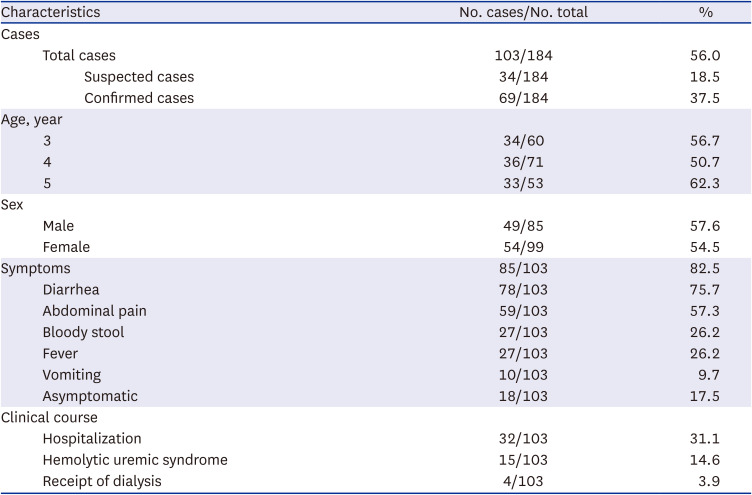





 PDF
PDF Citation
Citation Print
Print



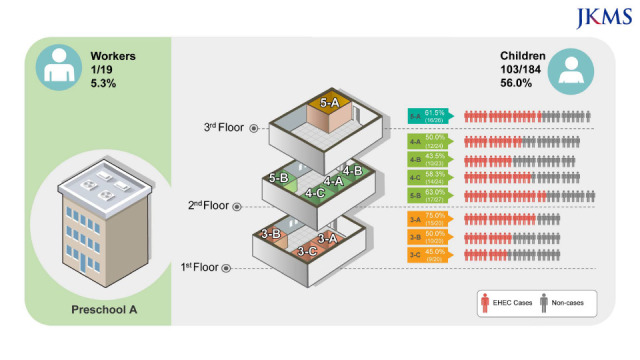
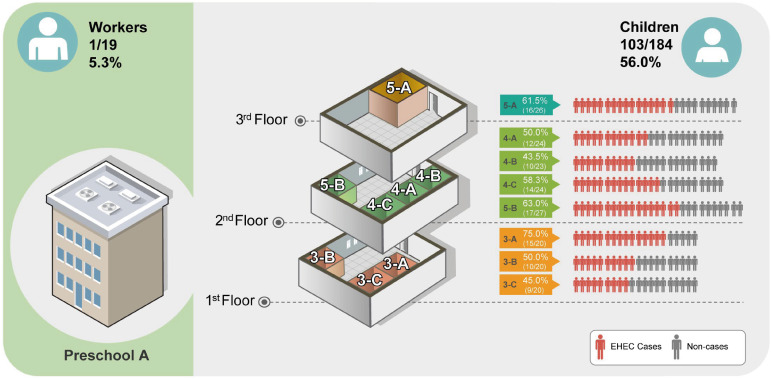
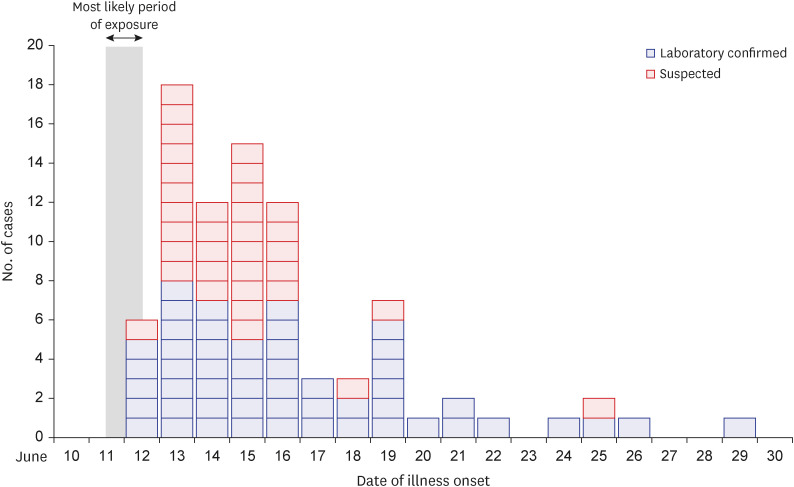
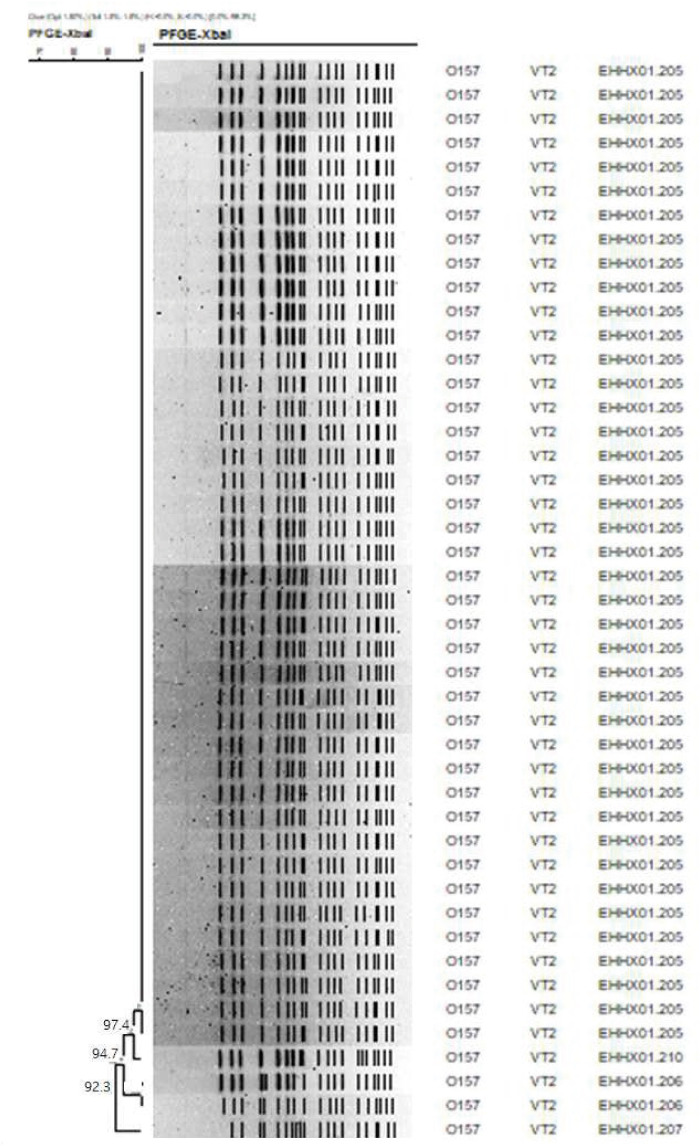
 XML Download
XML Download